The current state of global energy consumption is rapidly evolving, with a growing emphasis on environmentally friendly and flexible economics. The primary goal at this point is to shift priorities, with specific systems designed to revolutionize the management of energy for efficient use in various forms. Technology is rapidly integrating renewable energy sources to deploy energy storage systems, and these power conversion systems are transforming the way energy is generated, stored, and distributed. The purpose of this article is to evaluate the innovative trends in the area of power converters and their significance for the implementation of green energy and the impact on industries and society as a whole.
Understanding Power Conversion
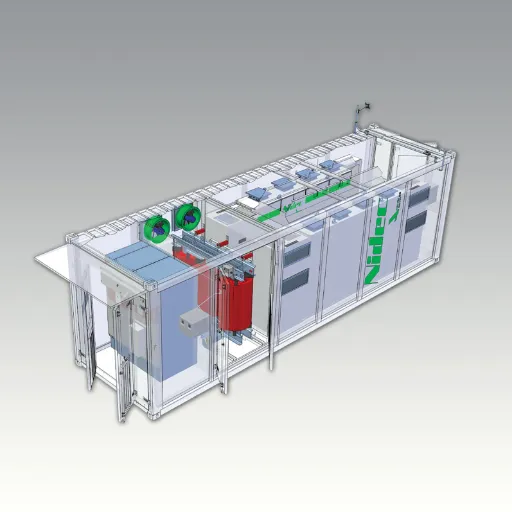
Power conversion in different applications refers to the adjustment of electricity to perform specific functions by converting it into another form of energy. The process includes the creation of different voltage levels, changing between alternating current (AC) and direct current (DC) sine waves, or converting frequencies. For example, in renewable energy systems, power conversion is a core concept that converts the electricity generated by solar panels from DC to AC, enabling it to serve homes and commercial buildings. The most recent power conversion apparatus enables end-users to conserve resources, reduce pollution sources, and enhance the grid’s ability to absorb additional renewable energy without issues.
What is Power Conversion?
In the realm of power systems, a branch known as power electronics involves the manipulation of electrical energy in various ways. Specifically, power conversion is the process of converting electrical power from one form to another purpose, efficiently utilized in industrial, lighting, electric utility, and consumer electronic equipment. Operationally, this could involve adjusting the voltage ratio in equipment, converting direct current to alternating current, or changing the frequency of the current in a circuit.
Power electronic systems of today utilize cutting-edge components, such as inverters, transformers, and rectifiers, to execute these operations effectively. For example, in electric vehicles, power converters manage the charging of the battery and route the power to the motor in order to enhance the performance and efficiency. Recent technological developments in materials, such as silicon carbide (SiC) and gallium nitride (GaN), have significantly increased the reliability and energy efficiency of systems, thereby underlining their role in new and renewable technologies.
Key Components of Power Conversion Systems
| Key Component | Description |
|---|---|
| Power Semiconductor Devices | Enable switching and conduction of current |
| Transformers | Transfer electrical energy between circuits |
| Rectifiers | Convert AC to DC power effectively |
| Converters | Adjust voltage and frequency as required |
| Controllers | Manage system operations and performance |
| Filters | Reduce noise and harmonics in circuits |
| Heat Sinks and Cooling | Dissipate heat to improve performance |
| Inductors | Store energy in a magnetic field |
| Capacitors | Store electrical energy temporarily |
| Circuit Breakers | Protect systems from overcurrents or faults |
Types of Power Converters and Their Functions
| Type of Converter | Key Function |
|---|---|
| AC to DC Converters | Transform alternating current to direct current |
| DC to AC Converters | Convert direct current to alternating current |
| DC to DC Converters | Adjust voltage between two DC sources |
| AC to AC Converters | Modify voltage, frequency, or phase of AC power |
| Buck Converters | Step down voltage efficiently |
| Boost Converters | Step up voltage effectively |
| Bidirectional Converters | Operate power flow in both directions |
| Isolated Converters | Provide electrical isolation between circuits |
Energy Storage in Power Conversion Systems
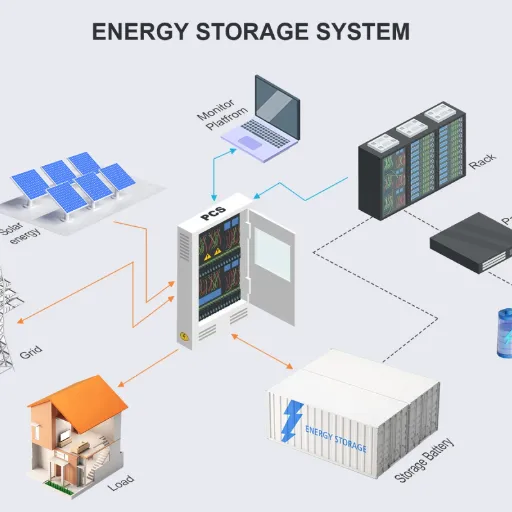
Energy storage is vital since it ensures stable and effective use of energy in power conversion systems. The most common forms of energy storage include:
- Batteries: Batteries, which are conveniently the most preferred because of their high energy density and capability of making various capacities. It stores electric energy in a chemical form, and it is removable addition when the device is in use or during the periods of recharging to cause rectification.
- Supercapacitors: These are electric devices that are easily charged or discharged between cycles, and are perfect for applications where high power loads are required, which in turn can be discharged and recharged rapidly.
- Flywheels: These systems drive the rotor to store energy through kinetic energy and efficiently provide an uninterrupted energy supply, and therefore have a longer life expectancy.
- Thermal Storage: Takes in and keeps heat in the form of heat energy, a system mostly found in power systems utilizing the sun as the heat source.
These energy storage systems also help reduce energy waste and enhance the productivity of energy systems, while decreasing the environmental carbon footprint.
Overview of Energy Storage Systems
Depending on the stage of technological advancement progression, suggestions of energy storage solutions undergo remarkable upgrades. Globally, the energy storage sector is anticipated to witness substantial progress over the forthcoming years, courtesy of the shift to alternative power sources such as solar and wind, which is becoming common. In these and related territories, it is more than warranted to assert that lithium batteries and related battery technology are the reason for their widespread application as energy-producing batteries. In addition, revolutionary safety and performance-improving aspects can be expected from advancements such as solid-state batteries within the field.
Energy storage at a larger scale, however, is an emerging aspect that also allows utilities to keep electrical power supply within control of its demand and intermittency with intermittent renewables. One such area is the storage of mechanical energy, where the pumped hydro and compressed air energy storage technologies are currently being pursued for both long-term energy storage and greenhouse gas mitigation purposes. In addition to these, artificial intelligence-based systems and solutions contribute to grid expansion, aiming to reduce energy loss and surplus in the electricity system.
Not to mention, the introduction of batteries and electric vehicles (EVs) also contributes to the complex reconstruction of the automotive and power grid sectors. Vehicle-to-grid (V2G) systems are designed to allow electric vehicles not only to use the consumed energy but also to provide energy for grid operation, which forms a decentralized and dynamic energy ecosystem. Regarding technology progression patterns and sustained policy initiatives, energy storage capacities are expected to be promoted in the realization of a ‘greener’ and ‘safer’ energy future.
Battery Energy Storage Systems (BESS)
Battery Energy Storage Systems (BESS) have been identified as an integral part of the global electricity grid due to the considerable advantages they offer for various applications. One such benefit is the equalization of demand and supply. These systems can ensure that any extra energy created during off-peak hours is captured and used to operate the system when demand is high. This helps avoid power shortages and reduces the need for peaker plants operating on gas or diesel fuel for balancing, thereby benefiting the environment significantly.
Beyond that, BESS is known for its ability to interwork with various renewable energy sources, such as solar power and wind power. This addresses the limitations of the intermittency of those power generation resources by utilizing BESS to be able to maintain continuous electrical energy production from renewable sources. On the other hand, the use of BESS during a blackout enhances grid resiliency.
In terms of economic feasibility, the new achievements in technology and production scaling significantly cut down the price of lithium-ion batteries, which ultimately makes BESS more affordable for residential, business, and grid-end uses. Apart from that, BESS is essential for energy storage as it offers services such as frequency and voltage regulation, aiming at improving the quality of power management in a well-coordinated manner.
Renewable Energy Applications
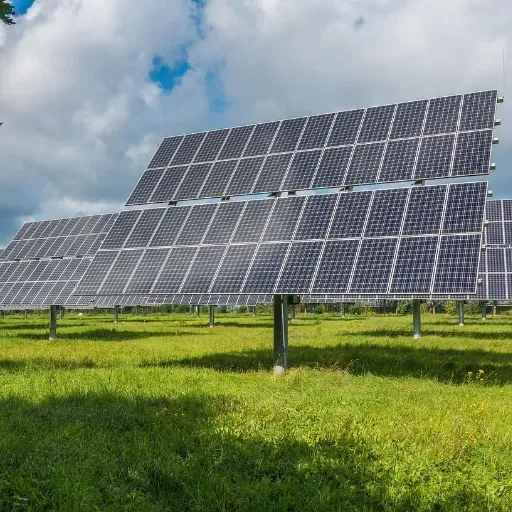
Battery storage and stationary energy storage systems in power systems, especially those powered by renewable energy sources such as utility-scale solar power plants or wind farms, are used for the purpose of addressing the issues posed by the variability of such energy sources. These battery energy storage systems absorb and store high levels of power during bonus energy generation and discharge that power freely when the system production falls or the power requirement of the system rises. Such a strategy allows for a constant supply of energy at all times. In addition, they also mitigate some of the challenges that arise when integrating renewables into the network by increasing penetration rates and reducing fluctuations, as well as reducing the need for some decommissioned power feeders in the network. This highlights the need to bring down carbon-based and greenhouse gas-emitting power generation systems even further.
Power Conversion for Solar Photovoltaics (PV)
Power conversion is a very important aspect of solar power systems. This is the part that allows electricity to be obtained from the sun and then be directed to usage. All photovoltaic cells that allow the production of electricity make use of direct current (DC). It is this DC that is necessarily first converted to alternating current (AC) for prime application in any home, office, or the national grid. The inverter is a system that mostly changes the direct current from the solar panel output to a more usable form, such as alternating current. In all the above functions, the least amount of power should be wasted in the units.
The function is to minimize these reversions in vain and make more modules fully operational. Traditional inverters, which are full of power-conditioned circuits, cannot provide the same level of modularity and efficiency. Microinverters cut power conversion costs down to the specific module level and advise the designers to maximize the energy output and minimize energy losses, even for the sectors where certain panels have been shaded or gotten dirty.
Enhancement in solar power technology has become a top priority in relation to net-zero carbon emissions since the demand for solar photovoltaics has increased globally. Currently, commercial solar panels have achieved an efficiency of up to 22% in recent reviews, a result of significant technological improvements. Driven by decreasing costs along with government policies, such additions have made solar power one of the easiest renewable sources available today.
Utilizing Wind Turbines in Power Conversion Systems
Wind turbines have become a transformative element in contemporary energy conversion systems, utilizing the wind’s kinetic energy to produce electricity. These systems are typically equipped with a number of advanced mechanisms, such as aerodynamic blades and gearboxes, to name a few. Wind turbines have gone up over the years of innovation and are able to produce energy even at low wind speeds. As a result, these turbines are well-suited for use in a wide range of geographical locations. Research and perfection in offshore wind turbines have caused some to achieve a small land geological space of over 15 megawatts. Thus, they have become an integral part of large-scale power generation from clean energy sources. The inclusion of these turbines in energy systems does not affect system stability, even during periods of low wind activity, due to the presence of energy storage. This is expected to reshape the energy sector, highlighting the inclusion of wind power in the transition structure.
Driving Renewable Energy through Efficient Energy Conversion
Up-to-date technology has been of great importance insofar as renewable energy systems are concerned. Inclusive in these efforts are the research and Development of high-efficiency inverters, which are core to transforming wind and solar energy, which are naturally DC to AC power. Solar inverters are good examples of this, as they currently achieve an efficiency higher than 98% consequently minimizing power loss through conversion. In addition, the advancement of technology has supported the use of solid-state batteries and other new forms of energy storage that coordinate energy production with consumption. These innovations are vital in integrating, among others, such energy sources into the grid, allowing for positive change and ensuring energy is transformed, stored, and transmitted without loss. It also reinforces measures designed to at least minimize global warming by reducing the excessive production of carbon dioxide from energy conversion and utilization practices.
Advancements in Power Electronics
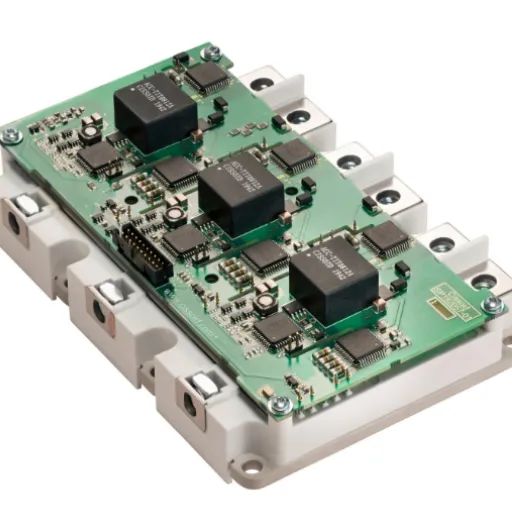
New technologies in electronic systems are rapidly improving energy systems, thanks to the effective transformation, limitation, and deployment of electricity. Specific factors such as highly efficient inverters and advanced bandgap materials like silicon carbide (SiC) and gallium nitride (GaN) contribute to an improvement in conversion efficiency and reduce the losses in power. These technologies are most suitable for the restructuring of electrical grids by incorporating numerous renewable sources of energy. There are likely other sources that enable the aforementioned scale of precise management and adaptation of energy systems in bringing order to the chaos caused by over-generation of peak power. Moreover, emerging designs in power electronics enable the integration of renewable energy sources, such as wind or solar energy. These are key to the adequate provision of more secure, dependable, and less polluting energy products so as to meet the existing demand.
Latest Developments in Power Electronic Converters
Silicon carbide (SiC) and gallium nitride (GaN) are the wide-bandgap semiconductors that serve as a positive coding of wide-bandgap (WBG) terminology in power electronics. They are plentiful in several attributes compared to silicon, which is traditionally the dominant component in power semiconductors. Among these are the capability to work at far higher switching frequencies, vastly superior performance in terms of heat transference, and lower switching power losses. With these features, it’s possible to construct even small and highly efficient converter designs that are most suitable for EVs, Renewable energy systems, and other high-power-driven applications. In addition to this, since WBG semiconductors have higher efficiency, they generate less heat, which means they will not need to be cooled as much. Consequently, there will be less cost for equipment in hot environments in the future.
Many changes occurred in power electronics converters with the adoption of advanced control algorithms and digitalization. These changes inthe functioning of the systems made it possible to use machine learning and AI to anticipate and remediate disturbances in the organization, ensuring its stable and economic functioning. There are many positive aspects of using such technologies, even more so when it comes to online predictions about the behavior of the system, maintenance, or control of actions that are necessary to sustain features of a highly complex and constantly changing energy system.
Innovations in Control Systems for Enhanced Performance
Control systems technology has experienced a steady growth over the last years, becoming more detailed and flexible. These days, most operating system designs come with digital twin models that allow simulating and analyzing how the system performs in various states of the computer without considering how it operates, which is of great importance. This step provides for the enhancement of predictive capabilities, minimizes outages, and improves the quality of the decision-making process. Furthermore, edge computing – the management of data by not only distributing it across internal or cloud networks but also processing it near its origin – is being employed as a solution, thereby reducing latency and increasing the speed of reactions during emergency operations. These dynamics are mixed and fused with highly developed methods of problem-solving, all of which contribute to the phenomenal improvement of the dependability, effectiveness, and capability of the systems.
The Role of DC and AC Power in Modern Energy Systems
Direct current (DC) and alternating current (AC) are two fundamental electrical systems that are widely represented in contemporary technology, each serving distinct purposes. For example, direct current (DC) is mostly utilized in power application areas such as energy storage, electrically powered transportation, and most of the renewable energy systems, such as solar photovoltaic technologies, which require mostly consistent power. In contrast, alternating current (AC) is highly effective in energy transmission and distribution, as it can travel long distances using transformers to increase or reduce voltage levels.
The integration of DC and AC systems is becoming increasingly important due to the growing adoption of renewable energy. Specifically, the development of technologies such as high-voltage DC (HVDC) systems contributes to compression losses, which are commonly not covered in energy integration from one place to another, making it possible to harness energy from ultra-distance renewable sources like offshore wind power. On the other hand, AC networks are enabling the extension, interconnection, and mutual exchange of energy between different regions. Integration of DC and AC grid technologies and consequently stricter grid codes have enhanced, and made more possible a sustainable energy network that can support the escalating worldwide energy requirements.
Grid Integration and Energy Supply
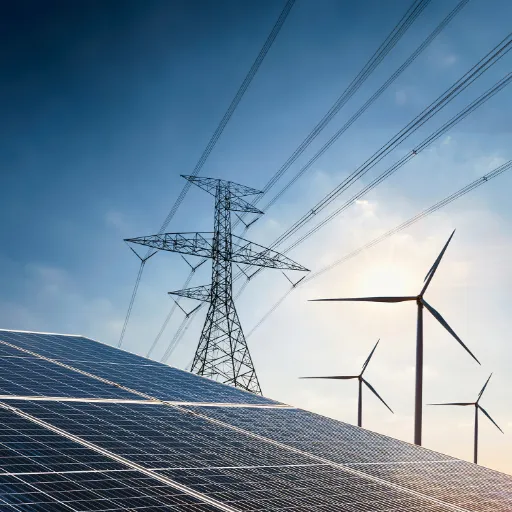
Grid integration relates to the activity of integrating various energy sources – renewable and non-renewable – into the electric power system while assuring the system reliability and system security. Managing the dynamically evolving nature of renewable energy, such as solar and wind energy, stands as a major challenge. These fluctuations occur due to the shifting stroke of electrification, as electricity supplies are subjected to fluctuations, hence the need for grid balancing. For these kinds of challenges, energy storage technologies based on batteries and other technologies have been developed, which store harvested low energy levels and release (or discharge) stored energy at high demand times. In addition, the deployment of smart grid supports the better use of the electricity system through managing the demand in real time. An advanced grid system, including long-distance transmission with high–voltage DC, and the interconnection of isolated, self-sustainable kW-level renewable sources, is another promising direction. Such methods and techniques aim to create a reliable and sustainable energy system, with a significant portion of its capacity composed of renewables.
Connecting Power Conversion Systems to the Grid
Power conversion systems (PCS) are indispensable components that facilitate the integration of renewable energy sources, such as solar and wind power, into the grid. These systems help in managing the variable renewable power plants by converting the renewable power into grid-compatible power, which is stable and efficient. Modern PCS designs contain advanced inverters used for control voltage, frequency, and power quality within the grid. This control is paramount, especially when the grid is handling the abnormal causes resulting from weather shifts in renewable energy generation. Additionally, with the advanced PCS, we can have bi-directional power flow systems, allowing energy storage systems to discharge power in critical conditions and charge the battery at the lowest possible voltage. PCS, by introducing refined control and communication protocols, is considered a key instrument in transforming energy systems into adaptive and sustainable ones.
Future Trends in Electric Power Supply Systems
The growth of electrical power systems is increasingly the result of a combination of advanced technologies and efficient business practices. Among them, one of the most useful applications is the use of artificial intelligence (AI) and machine learning to predict load size more accurately, as well as to optimize the electricity distribution system. These skills enable network operators to make the most efficient energy management decisions required in their environment and reduce power loss.
There were also some advanced innovations in the field of renewable energy development, including the increasing use of solar and wind energy, as well as more efficient energy types such as solid-state batteries. These innovative solutions address the issue of demand downtime and ensure a consistent supply, even during adverse weather conditions. Additionally, the development of microgrids enables the management of power from various resources within a specific area, which enhances the grid’s resiliency and facilitates the sharing of power within communities.
Electrical systems that deploy energy in a decentralized fashion and commercialize excess power via peer-to-peer energy exchange use blockchain technology. This is in addition to the fact that the construction of electric cars, which boasts of a government-supported expanded electric charging network, is engaging new volumes of load with previous loads. All this presents all previous structures as things of the past, with the current structure evolving into a holistic electricity supply system for the consumer.
Reference Sources
-
Energy Conversion Using Electronic Power Converters
- Key Findings: This study explores the role of power electronic converters in renewable energy systems, smart grids, energy storage, and sustainable transport. It highlights the importance of DC-DC converters and their efficiency in energy conversion processes.
-
Three-Phase to Single-Phase Power-Conversion System
- Key Findings: This paper proposes a system for converting three-phase power into single-phase power, addressing challenges in power distribution and load balancing.
Frequently Asked Questions (FAQs)
Q: How do energy storage systems work in conjunction with power conversion?
A: Energy storage systems (ESS) are crucial in the control of added renewable energy sources. They work in a way that, when power is available most of the time, it should be appropriately stored for future use. For these batteries to function as expected, a power conversion system is required. The energy used or made available for charging or discharging these batteries is easily converted. Energy from the battery, which is DC, is not only converted to AC through the PCS, but also the opposite occurs, where this AC power is converted back to DC. This process allows for the grid to operate, achieving the opposed balance of power.
Q: What types of power converters are used in energy storage devices?
A: Energy storage systems do require the presence of power converters due to their ability to convert energy from one form to another. Typical systems consist of a central inverter, which can turn direct current power acquired from imported sources, such as solar panels, and store it in batteries to produce alternating currents that feed into the grid. It is also worth noting that insulated gate bipolar transistors (IGBTs) are the preferred device for converting power in many power electronics circuits, which involve large power ratings. These converters can be used for multiple energy conversion operations, so long as enabling power, which can be generated from any renewable energy source, can be pumped into the system.
Q: What role does a battery management system play in power conversion?
A: Maintaining the performance and lifetime of battery systems while storing energy is very involved, thus rendering the battery management system (BMS) absolutely necessary. This is done through mechanisms implemented in battery energy storage systems to check and maintain the remaining energy and condition of the cells, control the charging cycles, and distribute energy to the cells at the load. The BMS, in conjunction with the power electronics, controls the discharge and charging processes with precision, which limits the power losses during storage. This also puts into practice limited powers, maximizing the release of stored energy without allowing the battery to become grossly low or charging to grossly high levels, and preventing deep discharging of batteries.
Q: How does frequency regulation impact power conversion systems?
A: One of the most fundamental tasks for maintaining the quality of an electric power system is restoring the proper frequency of its elements and the balance of all energy losses, especially with the growing integration of renewable sources. The need for power conversion systems that can adjust their power output to match the AC grid frequency is self-evident. This is mostly true when there is a sudden change in load or generation, like when a bus bar or electrical line trips from a cloud obscuring sunlight over a solar panel or peaks of loads during the day. Effective changes can be made quickly thanks to the energy produced by PC technology, which helps prevent incidents when energy is generated in excess of what the system requires.
